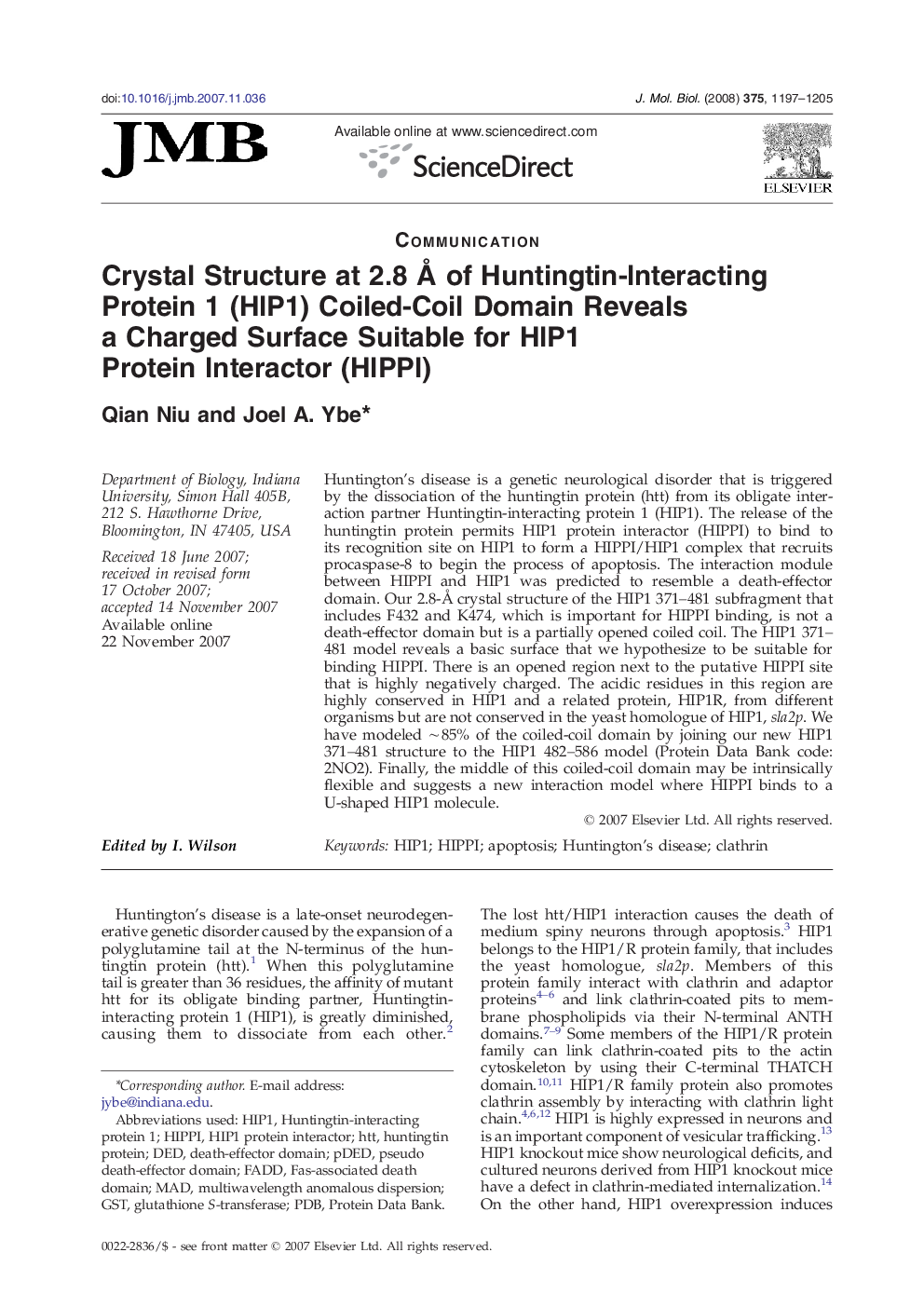| کد مقاله | کد نشریه | سال انتشار | مقاله انگلیسی | نسخه تمام متن |
|---|---|---|---|---|
| 2187504 | 1096123 | 2008 | 9 صفحه PDF | دانلود رایگان |

Huntington's disease is a genetic neurological disorder that is triggered by the dissociation of the huntingtin protein (htt) from its obligate interaction partner Huntingtin-interacting protein 1 (HIP1). The release of the huntingtin protein permits HIP1 protein interactor (HIPPI) to bind to its recognition site on HIP1 to form a HIPPI/HIP1 complex that recruits procaspase-8 to begin the process of apoptosis. The interaction module between HIPPI and HIP1 was predicted to resemble a death-effector domain. Our 2.8-Å crystal structure of the HIP1 371–481 subfragment that includes F432 and K474, which is important for HIPPI binding, is not a death-effector domain but is a partially opened coiled coil. The HIP1 371–481 model reveals a basic surface that we hypothesize to be suitable for binding HIPPI. There is an opened region next to the putative HIPPI site that is highly negatively charged. The acidic residues in this region are highly conserved in HIP1 and a related protein, HIP1R, from different organisms but are not conserved in the yeast homologue of HIP1, sla2p. We have modeled ∼ 85% of the coiled-coil domain by joining our new HIP1 371–481 structure to the HIP1 482–586 model (Protein Data Bank code: 2NO2). Finally, the middle of this coiled-coil domain may be intrinsically flexible and suggests a new interaction model where HIPPI binds to a U-shaped HIP1 molecule.
Journal: Journal of Molecular Biology - Volume 375, Issue 5, 1 February 2008, Pages 1197–1205